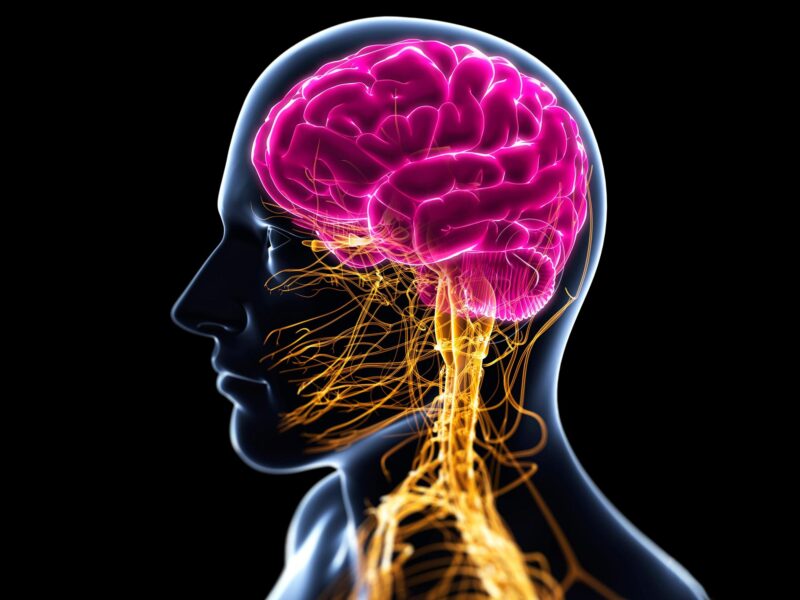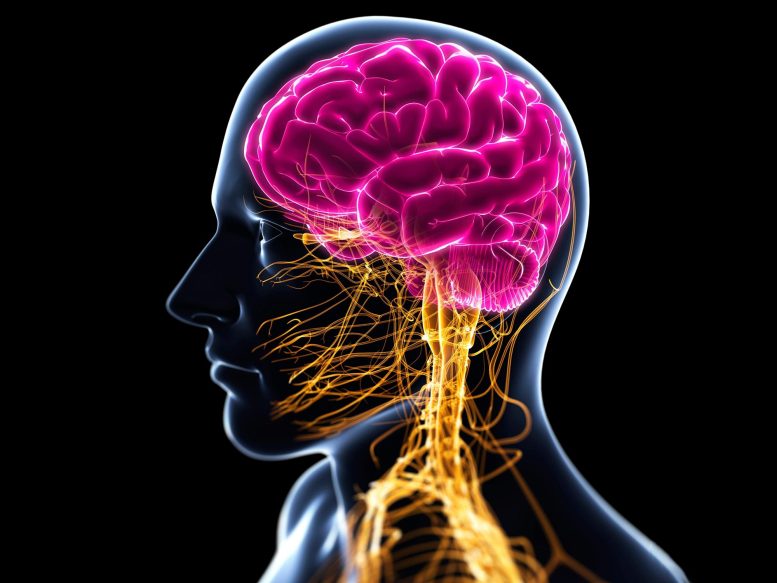Par
Une nouvelle étude qui sera présentée cette année au Congrès européen de microbiologie clinique et des maladies infectieuses (ECCMID 2022, Lisbonne, 23-26 avril) suggère que de nombreux symptômes liés au syndrome post-COVID (PCC, également connu sous le nom de COVID long) pourraient être liés à l’effet du virus sur le nerf vague – l’un des nerfs multifonctionnels les plus importants du corps. L’étude a été réalisée par le Dr Gemma Lladós et le Dr Lourdes Mateu, de l’hôpital universitaire Germans Trias i Pujol, à Badalona, en Espagne, et leurs collègues.
Le nerf vague s’étend du cerveau vers le bas dans le torse et dans le cœur, les poumons et les intestins, ainsi que plusieurs muscles dont ceux impliqués dans la déglutition. En tant que tel, ce nerf est responsable d’une grande variété de fonctions corporelles, dont le contrôle du rythme cardiaque, de la parole, du réflexe de déglutition, du transfert des aliments de la bouche à l’estomac, du déplacement des aliments dans les intestins, de la transpiration, et de bien d’autres encore.
Le COVID long est un syndrome potentiellement invalidant qui touche environ 10 à 15 % des sujets qui survivent à COVID-19. The authors propose that SARS-CoV-2-mediated vagus nerve dysfunction (VND) could explain some long COVID symptoms, including dysphonia (persistent voice problems), dysphagia (difficulty in swallowing), dizziness, tachycardia (abnormally high heart rate), orthostatic hypotension (low blood pressure) and diarrhea.
The authors performed a pilot, extensive morphological and functional evaluation of the vagus nerve, using imaging and functional tests in a prospective observational cohort of long COVID subjects with symptoms suggestive of VND. In their total cohort of 348 patients, 228 (66%) had at least one symptom suggestive of VND. The current evaluation was performed in the first 22 subjects with VND symptoms (10% of the total) seen in the Long COVID Clinic of University Hospital Germans Trias i Pujol between March and June 2021. The study is ongoing and continues to recruit patients.
Of the 22 subjects analyzed, 20 (91%) were women with a median age of 44 years. The most frequent VND-related symptoms were: diarrhea (73%), tachycardia (59%), dizziness, dysphagia and dysphonia (45% each), and orthostatic hypotension (14%). Almost all (19 subjects, 86%) had at least 3 VND-related symptoms. The median prior duration of symptoms was 14 months. Six of 22 patients (27%) displayed alteration of the vagus nerve in the neck shown by ultrasound – including both thickening of the nerve and increased ‘echogenicity’ which indicates mild inflammatory reactive changes.
A thoracic ultrasound showed flattened ‘diaphragmatic curves’ in 10 out of 22 (46%) subjects (which translates a decrease in diaphragmatic mobility during breathing, or more simply abnormal breathing). A total of 10 of 16 (63%) assessed individuals showed reduced maximum inspiration pressures, showing weakness of breathing muscles.
Eating and digestive function was also affected in some patients, with 13 of 18 assessed (72%) having a positive screen for self-perceived oropharyngeal dysphagia (trouble swallowing). An assessment of gastric and bowel function performed in 19 patients revealed 8 (42%) had their ability to deliver food to the stomach (via the esophagus) impaired, with 2 of these 8 (25%) reporting difficulty in swallowing. Gastroesophageal reflux (acid reflux) was observed in 9 of 19 (47%) individuals; with 4 of these 9 (44%) again having difficulty delivering food to the stomach and 3 of these 9 (33%) with hiatal hernia – which occurs when the upper part of the stomach bulges through the diaphragm into the chest cavity.
A Voice Handicap Index 30 test (a standard way to measure voice function) was abnormal in 8/17 (47%) cases, with 7 of these 8 cases (88%) suffering dysphonia.
The authors say: “In this pilot evaluation, most long COVID subjects with vagus nerve dysfunction symptoms had a range of significant, clinically-relevant, structural and/or functional alterations in their vagus nerve, including nerve thickening, trouble swallowing, and symptoms of impaired breathing. Our findings so far thus point at vagus nerve dysfunction as a central pathophysiological feature of long COVID.”
Meeting: The European Congress of Clinical Microbiology & Infectious Diseases (ECCMID 2022)




